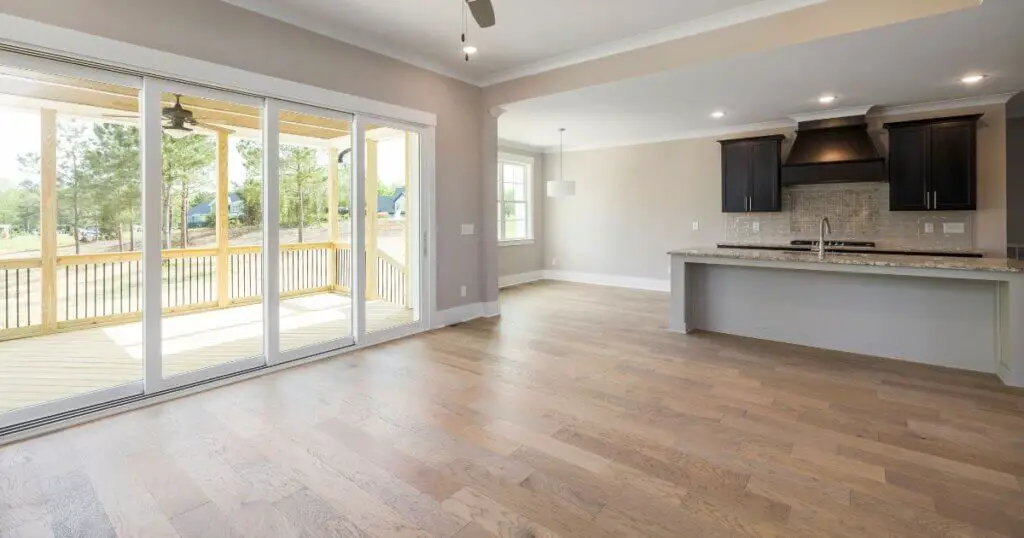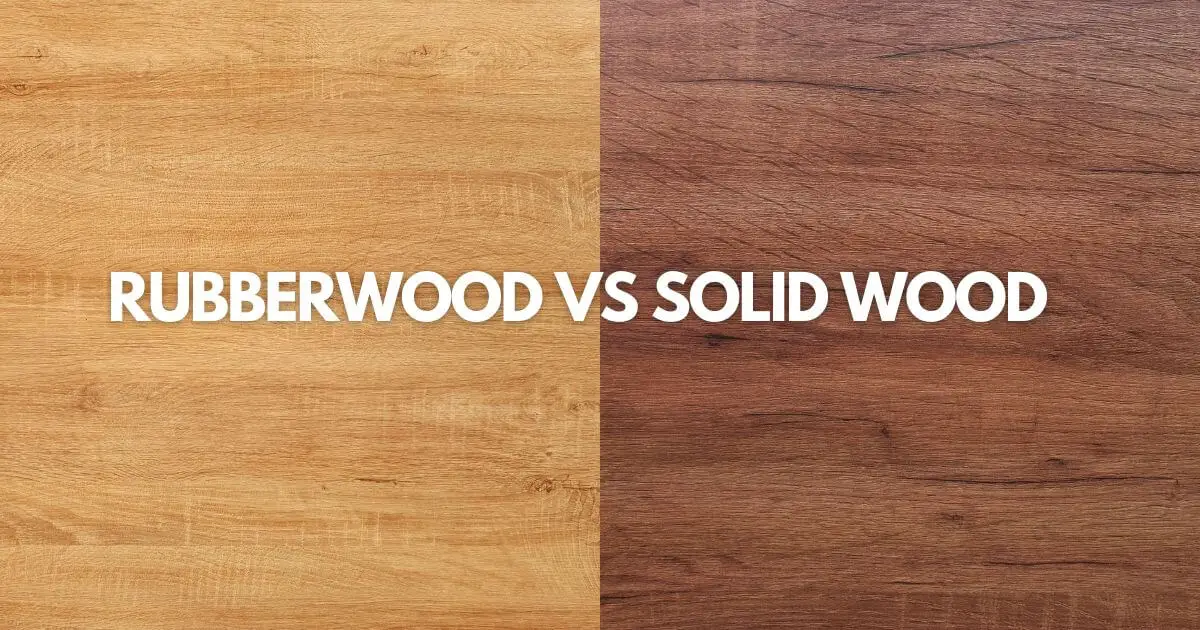The main difference between Rubberwood and solid wood is that Rubberwood is not suitable for exterior purposes, whereas most solid wood species can be used for exterior and interior purposes.
So we can say that solid wood can be stronger than Rubberwood. But there are many solid wood species, and not all species are as strong as Rubberwood.
What is Rubberwood?
Rubberwood is light-colored, medium-density hardwood that comes from the rubber tree. It is also known as Parawood or Hevea brasiliensis. Rubberwood is real hardwood that is used for furniture and cabinets.
Rubberwood is native to South America, particularly in countries such as Brazil and Peru. The rubber tree is typically found in regions with low altitudes. Latex is collected from the rubber tree, which makes rubber after several processes.
What is Solid Wood?
Solid wood refers to wood from various tree species and is valued for its durability, strength, and natural beauty. There are mainly two types of solid wood, hardwood, and softwood.
The main difference between hardwood and softwood is: Hardwood comes from deciduous trees, which are trees that shed their leaves annually, whereas softwoods come from coniferous trees, which are usually evergreen trees with needle-like or scale-like leaves.
Characteristics of Rubberwood
| Scientific Name | Hevea brasiliensis |
| Tree size | 50-100 ft (15-30 m) tall, 1-3 ft (.3-1 m) trunk diameter |
| Average Dried Weight | 37 lbs/ft3 (595 kg/m3) |
| Janka Hardness | 960 lbf (4,280 N) |
| Elastic Modulus | 1,314,000lbf/in2 (9.07 GPa) |
| Crushing Strength | 6,110 lbf/in2 (42.1 MPa) |
| Type | Hardwood |
Uses

Rubberwood
Rubberwood is used for many purposes, such as furniture, cabinetry, interior millwork, moldings and trim, cutting boards, crafts, and DIY projects.
Solid Wood
Solid wood can be used for countless purposes; It can be used for construction, building, furniture, plywood, cabinetry, flooring, paper, pulp, tools handles, boat-building, siding, decking, and many more.
Workability
Rubber wood is easy to work with because of its low density and straight grain pattern. But rubber wood has a lot of moisture, so the wood can twist after drying, so choose well-dried wood to work with.
Working with solid wood depends on the species of wood. Some softwood (Generally have low density) species that are easy to work with, such as pine, balsa, Poplar, cedar, aspen, basswood, and more, but hardwoods (They generally have high density) that are difficult to work with, such as ironwood, Brazilian walnut, teak, mahogany, ebony, Lignum Vitae, and more.
Hardness
Rubberwood has a Janka hardness value of 960 lbf (4,280 N) and an average dry weight of 37 lbs/ft (595 kg/m).
Again, the hardness of solid wood depends on the wood species. Solid wood hardness values range from 67 lbf (300 N) to 4,390 lbf (19,510 N).
Here are the Janka hardness values of other popular wood species.
| Wood Species | Janka Hardness |
| Balsa | 67 lbf (300 N) |
| Northern white cedar | 320 lbf (1,420 N) |
| Aspen | 350 lbf (1,560 N) |
| White fir | 480 lbf (2,140 N) |
| Honduran mahogany | 900 lbf (4,020 N) |
| Black Walnut | 1,010 lbf (4,490 N) |
| Acacia blackwood | 1,160 lbf (5,180 N) |
| Blue Ash | 1,290 lbf (5,740 N) |
| Sapele | 1,410 lbf (6,280 N) |
| Hard maple | 1,450 lbf (6,450 N) |
| Honey Locust | 1,580 lbf (7,030 N) |
| Merbau Wood | 1,840 lbf (7,620 N). |
| Wenge | 1,930 lbf (8,600 N) |
| Amazon Rosewood | 2,700 lbf (11,990 N) |
| Ipe | 3,510 lbf (15,620 N) |
| lignum vitae | 4,390 lbf (19,510 N) |
Rot and Insect Resistant
Rubberwood is not rot and insect resistant. It is susceptible to decay when exposed to moisture and environmental change. With proper sealing or exterior finishing, rubberwood will last in outdoor environments.
Some hardwood species have excellent resistance to rot and insects. The species mainly belong to the hardwood category such as mahogany, cedar, teak, redwood, white oak, black walnut, and many more.
Some wood species primarily belonging to the softwood category are highly susceptible to rot and insect attacks, such as pine, maple, birch, aspen, beech, alder, hemlock, poplar, and more.
Is Rubberwood Real Wood?
Yes, rubberwood is a true hardwood species used to make furniture and cabinets like other solid woods. Rubberwood is sustainable. Rubber trees are mainly grown for latex production, but twenty-five to thirty-year-old trees stop producing latex after mature rubber trees are harvested for timber.
Is Rubberwood Good for Flooring?
Rubberwood can be a good choice for making light-colored flooring. It is an ecologically friendly hardwood species. Its moderate density resists dents and scratches. But it needs to be protected from prolonged exposure to moisture or water.
Is Rubberwood Waterproof?
No, rubberwood is not waterproof and not good water resistant. In other words, it can withstand moderate amounts of moisture for short periods. But still, rubberwood can be used for light moisture purposes like kitchen or flooring with finishing.
Many wood species, such as ipe, teak, oak, iroko, western red cedar, cherry, maple, and more, are highly water resistant.

